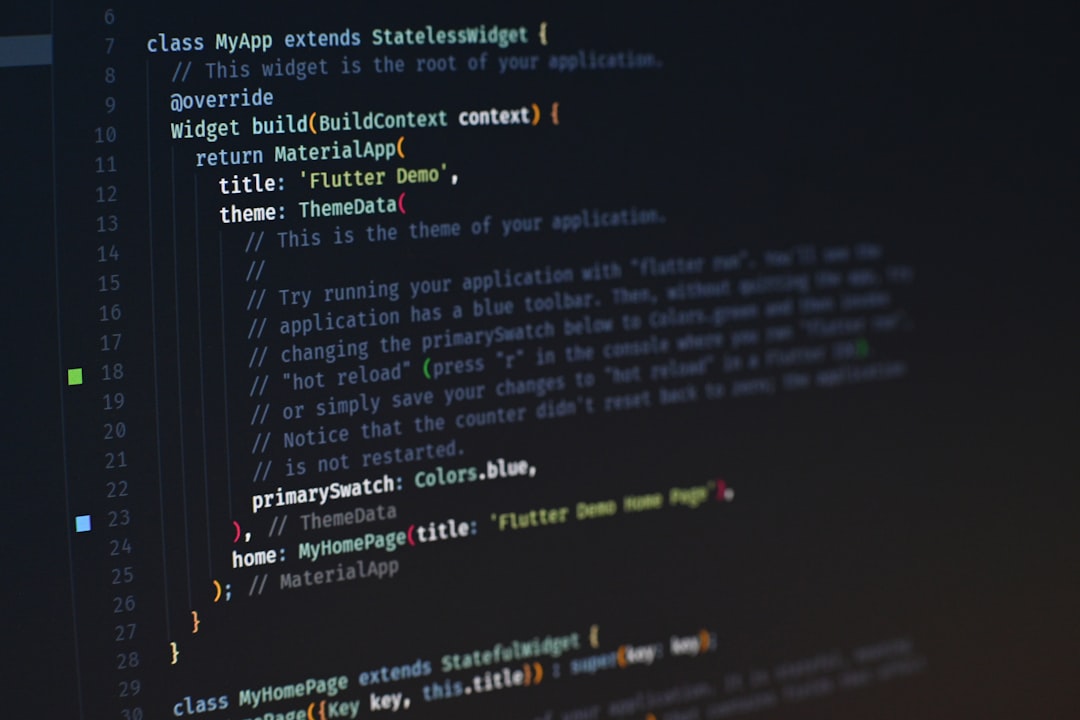Revolutionizing Visual Programming Toplinesoft S — here’s what’s new, why it matters, and what to watch next.
Revolutionizing Visual Programming: TopLineSoft’s Innovative Language ‘Pipe’
At a Glance
On October 8, 2025, TopLineSoft Systems unveiled its groundbreaking book titled “General-Purpose Visual Programming Language Pipe.” The publication aims to tackle significant challenges in software development through an innovative visual programming language designed for both novice and experienced developers. With this new approach, TopLineSoft aspires to simplify the programming process and enhance accessibility.
Background & Timeline
Visual programming has gained traction over the years as a method to streamline the coding process. Traditional text-based programming languages often present a steep learning curve, making it challenging for newcomers to break into the tech industry. TopLineSoft, based in Surrey, British Columbia, recognized these challenges and set out to create a solution that combines visual elements with programming logic.
The development of the Pipe language has been years in the making, with initial concepts dating back to early 2020. TopLineSoft conducted extensive research and user testing to identify the most pressing pain points developers face. By early 2025, the team had created a prototype that showcased the core functionalities of the Pipe language, which was subsequently refined based on feedback from beta testers, including educators and professional developers.
What’s New
The book “General-Purpose Visual Programming Language Pipe” introduces a unique framework that allows users to create software applications by arranging visual components rather than writing lines of code. This approach is designed to minimize syntax errors, a common headache for programmers, while providing a more intuitive way of understanding programming logic.
Key Features of Pipe:
1. Drag-and-Drop Interface: Users can build applications by dragging visual elements onto a workspace. This feature is especially beneficial for those who may struggle with traditional coding syntax.
2. Real-Time Feedback: The Pipe language provides instant feedback as users create their applications, allowing for quick adjustments and learning opportunities.
3. Modularity: Developers can create reusable components, which can be shared across different projects, enhancing efficiency and reducing redundancy.
4. Extensive Documentation: The accompanying book not only outlines how to use the Pipe language but also offers numerous examples and case studies that illustrate its practical applications.
5. Community Support: TopLineSoft is committed to fostering a community around the Pipe language, with forums and resources for users to exchange ideas and solutions.
Why It Matters
The introduction of the Pipe language is significant for several reasons. Firstly, it democratizes access to programming. By lowering the barrier to entry, more individuals can engage in software development, potentially leading to increased diversity within the tech field. As the demand for software solutions continues to grow, equipping a broader audience with programming skills could address workforce shortages.
Secondly, the visual programming paradigm aligns well with current educational trends. Many educators are looking for ways to teach programming concepts without overwhelming students with the complexities of syntax. Pipe’s intuitive design could serve as an effective teaching tool in classrooms, allowing educators to focus on the underlying principles of coding rather than the intricacies of language syntax.
Lastly, the industry is witnessing a shift towards low-code and no-code solutions. As businesses seek to streamline their processes and reduce development costs, the Pipe language could position itself as an attractive option for organizations looking to empower non-technical employees to participate in software development.
What to Watch Next
As TopLineSoft prepares for the official release of the Pipe language, several key developments are anticipated:
- User Adoption: The success of Pipe will largely depend on how quickly and effectively it is adopted by both individuals and organizations. Monitoring user feedback will be crucial in assessing its impact.
- Educational Integration: Schools and universities may begin to incorporate Pipe into their curricula, leading to a potential shift in how programming is taught.
- Community Engagement: The growth of an active community around Pipe can significantly influence its longevity and evolution. TopLineSoft’s initiatives to foster collaboration will be worth observing.
- Competing Technologies: As more companies recognize the benefits of visual programming, it will be interesting to see how Pipe competes with existing solutions in the market.
FAQ
Q1: What is the main goal of the Pipe language?
A1: The primary goal of the Pipe language is to simplify software development by providing a visual programming approach that is accessible to both beginners and experienced developers.
Q2: How does the drag-and-drop interface work?
A2: The drag-and-drop interface allows users to create software applications by selecting visual components and placing them in a workspace, eliminating the need for traditional coding syntax.
Q3: Is the Pipe language suitable for professional developers?
A3: Yes, the Pipe language is designed to cater to both novice and professional developers, offering features that enhance productivity and streamline the development process.
Q4: What kind of support will be available for Pipe users?
A4: TopLineSoft plans to provide extensive documentation, forums, and community resources to support users in their journey with the Pipe language.
Q5: How does Pipe align with current educational trends?
A5: Pipe’s intuitive design allows educators to teach programming concepts without overwhelming students with complex syntax, making it a valuable tool in modern education.
Q6: What are the implications for the tech workforce?
A6: By lowering barriers to entry, the Pipe language could potentially increase the number of individuals entering the tech workforce, addressing skill shortages in the industry.
Takeaways
TopLineSoft’s introduction of the Pipe language marks a significant step forward in the field of visual programming. By focusing on accessibility and user experience, this innovative approach has the potential to reshape how software development is taught and practiced. The upcoming release of the accompanying book promises to provide a comprehensive resource for those looking to harness the power of visual programming.
As the tech landscape continues to evolve, keeping an eye on the developments surrounding the Pipe language will be essential for educators, developers, and organizations alike.
—
Sources & Credits: Reporting synthesized from multiple reputable outlets and official releases.
Read our related coverage for more on Revolutionizing Visual Programming Toplinesoft S.
For context and confirmations, see reputable wires like Reuters or AP News.
Source: Original Source. Reporting synthesized from multiple reputable outlets and official releases.
For deeper analysis on Revolutionizing Visual Programming Toplinesoft S, explore more reports and explainers on Insurance Rate Expert.













